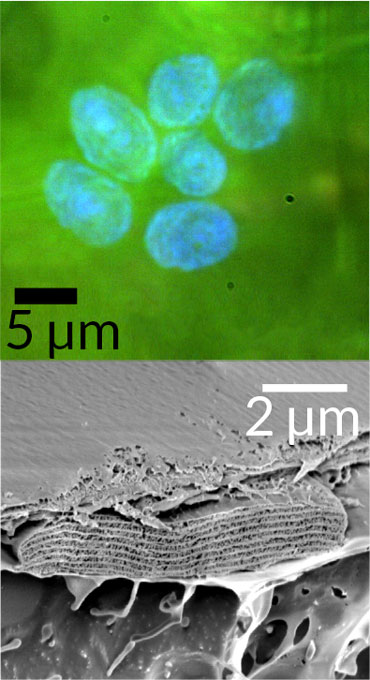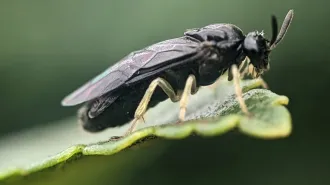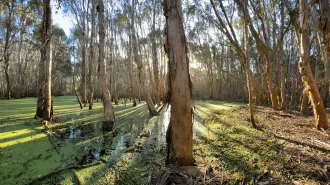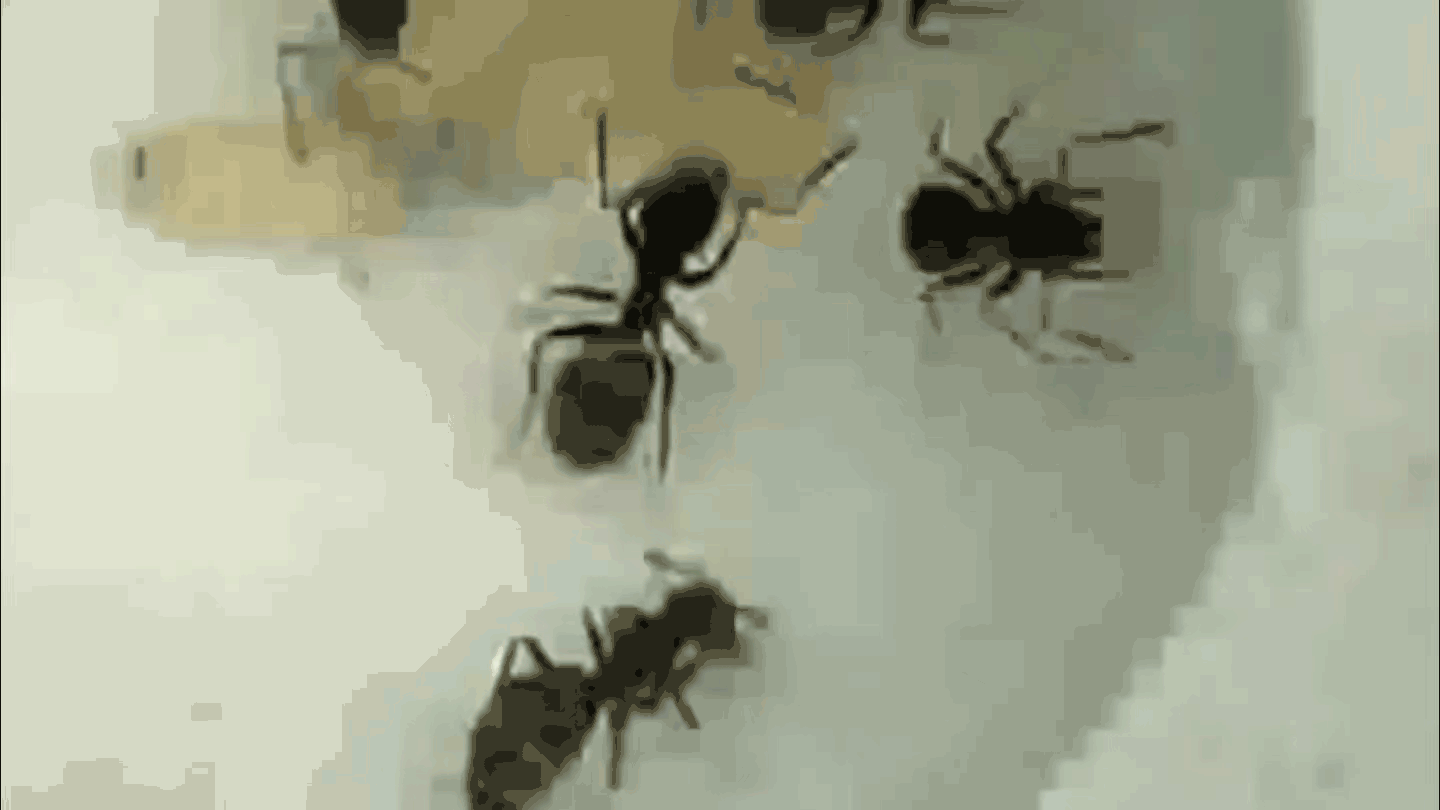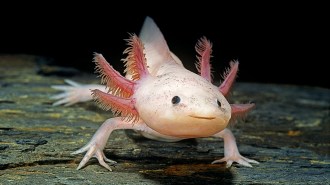Blue leaves help begonias harvest energy in low light
Tiny structures give plants iridescent color, aid photosynthesis in shady conditions
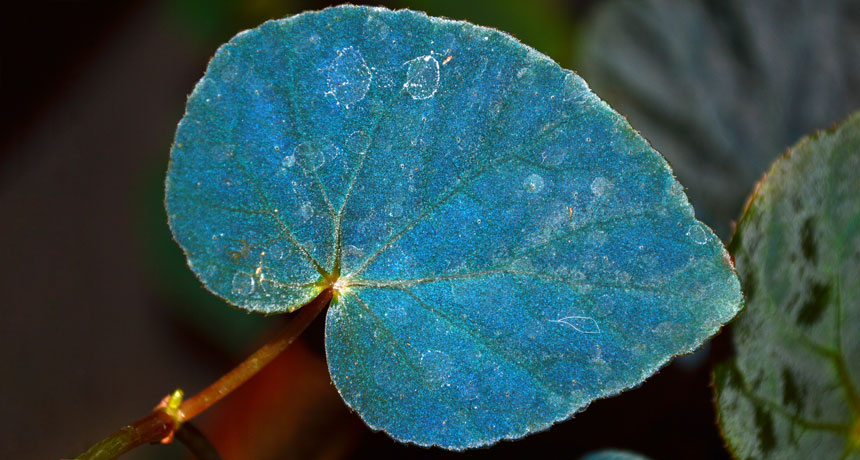
ROSES ARE RED, BEGONIAS ARE BLUE The iridescent color of some begonias comes from tiny structures. Those structures also help the plant convert dim light into energy, scientists found.
Matthew Jacobs
